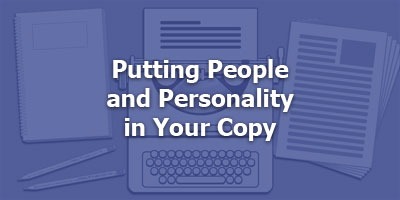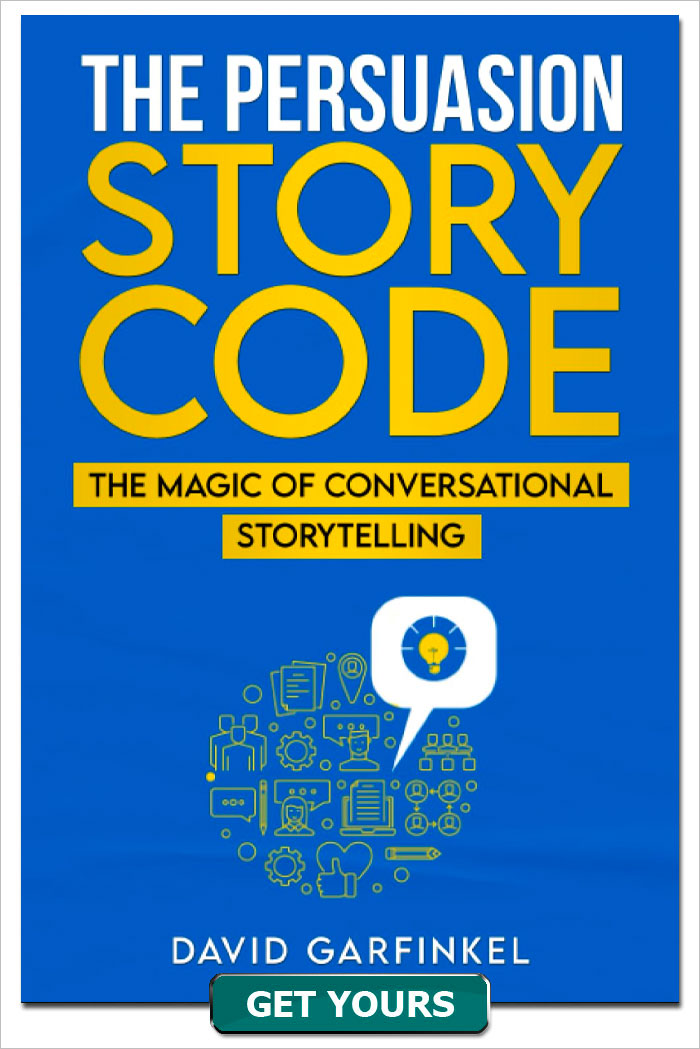Episode 015 - Putting People and Personality in Your Copy
Published by: David Garfinkel on 07-30-2017
Tweet
A blockbuster Hollywood movie can make hundreds of millions of dollars in a matter of weeks. Here's how you can cash in on one of its major secrets in your copy.
Nearly 20 years ago, I used to hang out with my friend John Cantu. We would meet once a month at Mel's Diner on Geary Boulevard in San Francisco's Richmond District, and we'd talk about all sorts of things.
Before Cantu and I ever met, he was co-producer of a comedy club that had been located just a few blocks away from Mel's. The club was called "The Holy City Zoo." Many great comedians got their start there, including Margaret Cho, Dana Carvey, Will Durst, Paula Poundstone, and most notably, the late, great Robin Williams.
Cantu had a great line about him: "Robin would work anywhere you could imagine. He'd show up for the opening of an envelope."
One day Cantu and I decided to crack the code of great storytelling. I'm not sure we ever did, completely. But one thing we figured out is that movies are entertaining especially because there are so many people in the story.
We went on to coach speakers with this discovery, and even did a special presentation on this subject for the local chapter of the National Speakers Association, along with our friend, the great motivational speaker Patricia Fripp.
Unfortunately, Cantu passed away in 2003. But he lives on in my memories… and I think our discovery offers a lot to copywriters, too.
That is, when you put people in your copy, it comes alive and holds interest. Yes, what works is different than what works in a screenplay or in a speech. We'll talk about boosting interest and getting prospects engaged in your copy, by the artful use of including people in your copy, in this episode.
But first, in case you've never heard this before:
Copy is powerful. You're responsible for how you use what you hear on this podcast. Most of the time, common sense is all you need. But if you make extreme claims… and/or if you're writing copy for offers in highly regulated industries like health, finance, and business opportunity… you may want to get a legal review after you write and before you start using your copy. My larger clients do this all the time.
Now, about people in your copy…
Let's reach back a few minutes… that story I told you about Cantu. It's inherently interesting because it's about show business and celebrities… but did you count all the people in that story? Besides me and Cantu, there were five other people in the story: Patricia Fripp, Margaret Cho, Dana Carvey, Paula Poundstone, and of course the unforgettable Robin Williams.
It was only a two-minute story… seven people. Of course four of them are famous, if you know comedy. And a fifth one if you know professional speaking.
But let me tell you another story that's mostly about everyday people.
I went to the bank Tuesday morning. When I got to the window, Jasmine the teller was very excited. You see, the Warriors had just won the NBA championship the night before, and they're our hometown team. She told me in great detail about watching the game with her brother, who was a Cavs fan, because he likes LeBron James.
Even though his team lost, she told me, he went out to party. He asked her to go, but, she had work the next day (which was the day we were talking). She told him she needed to get sleep and she couldn't do her job very well if she was hung over. So he went out by himself.
OK, there's a story. Four people in two paragraphs. Me, Jasmine, Jasmin's brother, and of course the great Labron. Don't you think this story's just a lot more interesting than, "I went to the bank on Tuesday and I had a nice conversation with the teller."
This is important because, that was out of real life. That's how people talk all the time. What they talk about isn't always that interesting by itself, but it becomes more interesting when they populate their stories with other people.
And the same is true with your copy.
Let's start at square one. The best copy is from one person to one other person – the prospect.
A lot of people make the mistake of trying to be too "businesslike" by not writing personally. Big mistake.
• reveal enough about yourself A lot of people make the mistake of trying to be too "businesslike" by not writing personally. Big mistake.
• write to your prospect like you know something about them, like you know what's important to them and it's important to you, too – and write in a conversational way.
• "businesslike" is more formal and aloof. Not good for copy.
• you don't need to overdo it. A few personal details that are meaningful to the prospect will do the trick.
Another place to include people is a testimonial, or a case study.
• At the very least, use names and a location.
• And where it fits, an occupation. By the way, "Mom" and "homemaker" are just as much occupations you can use as "CEO" or "chiropractor" – and just as important. We're not talking about conventional social status here. We're talking about your prospect identifying with the person giving the testimonial.
• Testimonials typically talk about results that people get from products or services – or, their experience using those products or services. Take it one step further by talking about how the results or experiences fit into the bigger picture of their lives. It doesn't have to be elaborate or detailed. Just meaningful and believable. And, by the way, true. And agreed to by the person giving the testimonial.
Example:
(not as good) "David's critique gave us tweaks that improved our conversion rates substantially. We're getting a better bang for our advertising buck."
- J.E.
(better) "David's critique gave us tweaks that improved our conversion by 27%. We're getting a better bang for our advertising buck. I sleep better knowing the advertising pays for itself, and then some."
- Jared Excellentus, Topical Life Tips, LLC
Now, let's get a little more sophisticated: What others will think of you.
- Victor Scwab in How to Write a Good Advertisement: "BOY PT MOM" – "Because of You, People Think More Of Me."
- One great desire wired into our neurology – the desire to improve status.
- Perfect example is the famous Wall Street Journal letter, the two young men story. The young man who started out reading the Journal ends up as the CEO of the company. The guy who didn't ends up working for the guy who did.
And, along the same lines, how what you sell will not only affect the prospect, but also affect others.
- Say you've got a self-defense course.
- Always START with self-interest: It helps the prospect protect himself or herself
- Next level: It also helps you protect your family
- Next next level: You can help them learn to protect themselves when you're not with them
- By the way, this is a key piece of the end of the Hero's Journey. The hero returns to society with valuable wisdom, and shares it with the community.
Finally, why do people and personality matter so much in your copy?
- We live in a world of other people, not products and services
- Your prospects aren't inherently interested in products and services
- They're interested in benefits – which, really, are how a product or service will affect them, as a person, and how the product or service will affect them in the context of other people
- Bringing people and personality into your copy makes your copy more meaningful… and makes what you talk about come across as more real
Keywords: personality connection personal people sales copy









